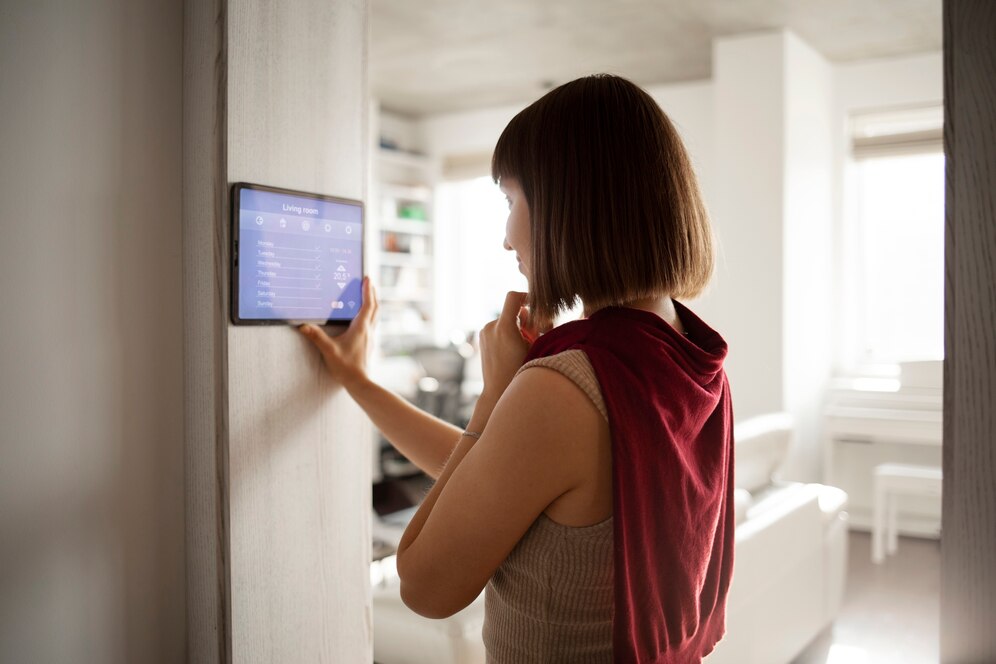You don’t need thousands of dollars to make your home smarter. Thanks to budget-friendly devices and easy DIY solutions, you can start automating your space for under $100. Whether you’re looking to control lights from your phone, boost home security, or use voice commands, building a smart home on a tight budget is entirely doable—and surprisingly satisfying.
Here’s how to create a functional and versatile smart home setup for $100 or less.
1. Set a Goal: What Do You Want Your Smart Home to Do?
Before buying anything, ask yourself what problems you’re trying to solve or what conveniences you want. Some common beginner goals include:
-
Control lights with voice or a phone app
-
Get notified about motion or door activity
-
Automate routines like turning lights off at night
-
Use voice assistants for music, timers, and reminders
Identifying your priorities helps you focus your budget where it matters most.
2. Choose a Smart Home Ecosystem
To keep things simple and compatible, pick one platform to build around. The most beginner-friendly (and budget-friendly) options are:
-
Amazon Alexa
-
Google Assistant
Both have affordable entry points, support a wide range of third-party devices, and can be controlled via smartphone apps or smart speakers.
3. Budget Breakdown: What $100 Can Get You
Here’s a sample setup you can build for about $100:
Amazon Alexa Ecosystem Example
| Device | Purpose | Price (approx.) |
|---|---|---|
| Echo Pop or Echo Dot | Voice control & hub | $25–35 |
| 2x Smart Plugs (TP-Link/Kasa) | Control lights or appliances | $20 |
| 2x Smart Bulbs (Wyze or Sengled) | Voice/app-controlled lighting | $20 |
| Smart Motion Sensor (Third-party) | Trigger lights or routines | $20 |
Total: $90–95
Google Home Ecosystem Example
| Device | Purpose | Price (approx.) |
|---|---|---|
| Nest Mini (2nd Gen) | Voice control & hub | $30 |
| 2x Smart Bulbs (GE, Philips Wiz) | App/voice-controlled lighting | $20 |
| Smart Plug | Control non-smart appliances | $10–15 |
| Contact or Motion Sensor | Security or automation trigger | $20–30 |
Total: $90–100
Prices vary depending on sales, bundles, and store promos—shopping during major sales (like Black Friday or Prime Day) can save even more.
4. Setup Tips for a Smooth Start
-
Install the hub first: Set up your Echo Dot or Nest Mini using the Alexa or Google Home app.
-
Add one device at a time: Start with a bulb or plug and make sure it connects properly before adding more.
-
Name devices logically: Use clear names like “Living Room Lamp” or “Desk Light” for easy voice control.
-
Use routines and schedules: Set lights to turn off at night, or have a plug power up your coffee maker in the morning.
5. Automations to Try on a Budget
-
“Good Night” Routine: One command turns off all smart bulbs and plugs.
-
Motion-Triggered Light: Motion sensor near the entryway turns on a light plug for 5 minutes.
-
Voice-Controlled Lighting: “Alexa, turn on bedroom lamp” while your hands are full.
-
Scheduled Lights: Bulbs turn on at sunset and off at 10 p.m. automatically.
6. Where to Buy Budget Smart Home Gear
-
Amazon – Best deals on Echo devices, smart plugs, and bulbs.
-
Walmart & Target – Great for Wyze, GE, and TP-Link products.
-
Best Buy – Frequent sales and bundles.
-
Refurbished or open-box – Consider certified refurbished gear for deeper discounts.
7. Expand When You’re Ready
Once you’ve hit the $100 mark and want to expand, consider adding:
-
Smart thermostat (like Wyze or Amazon Smart Thermostat – around $60–$80)
-
Indoor security camera (Wyze Cam v3 – around $35)
-
Smart lock (budget models start at around $80–$100)
-
LED light strips or smart switches
Creating a smart home doesn’t have to be expensive or complicated. With less than $100, you can automate lighting, add voice control, and even improve home security. Start small, keep things simple, and build your system over time based on your needs.
Smart living is about convenience, not cost—so start where you are.

